How to clean metal garden furniture – remove rust, algae, and dirt with these expert tips
Restore your outdoor furniture in six simple steps
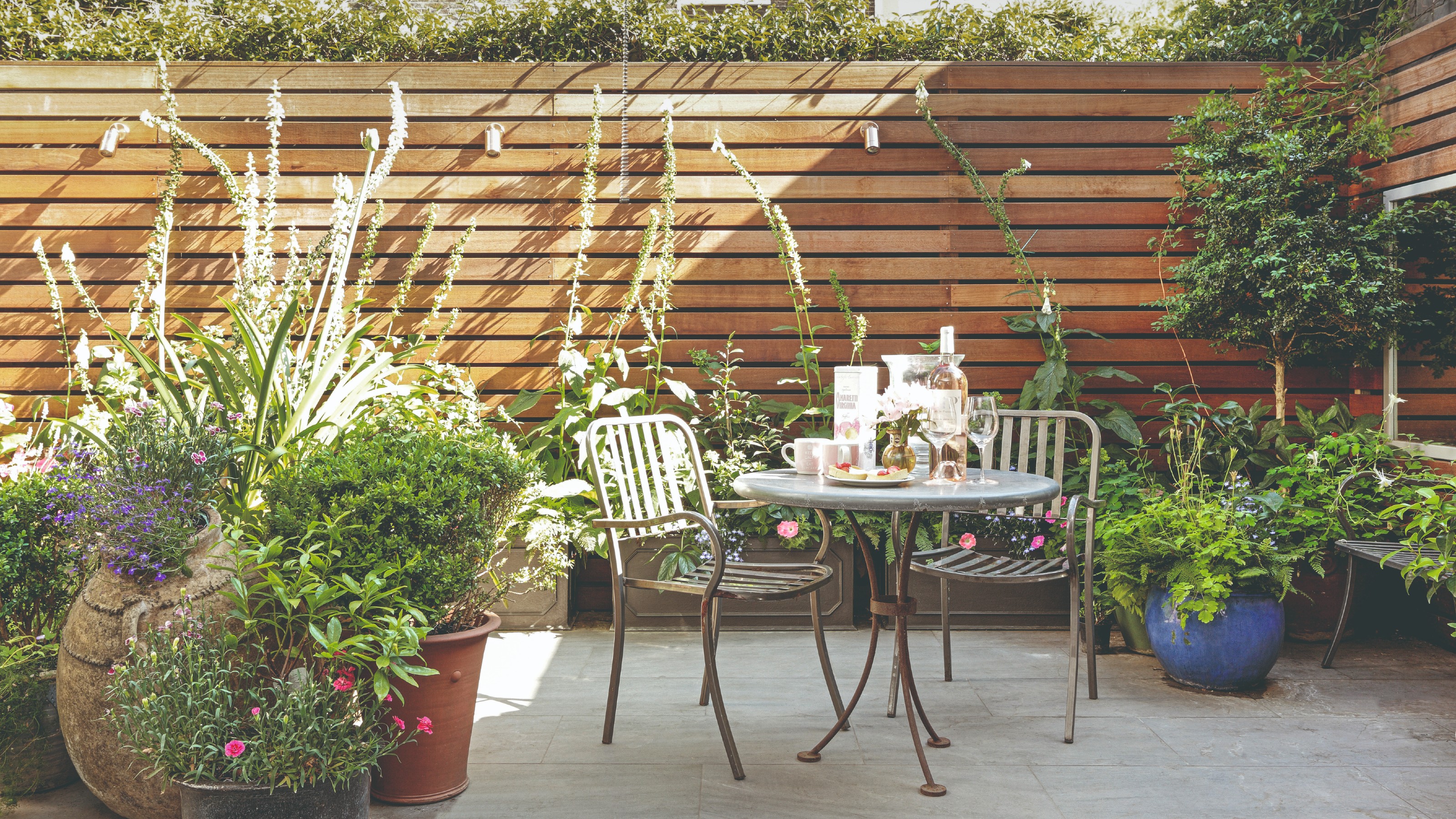

It’s not uncommon for metal garden furniture to look a little worse for wear after a while. And while it’s fairly durable, metal furniture still struggles to contend with changing weather patterns and summer-long use. That’s where knowing how to clean metal furniture can help.
While we all know that cleaning garden furniture is the key to keeping the best garden furniture in top form, many people fail to realise that materials matter. After all, metal garden furniture is very different to wooden outdoor furniture and other materials, which means that you have to tailor your cleaning process to ensure your metal pieces stay squeaky clean.
So with this in mind we reached out to experts in the field to get all the info you need on how to clean metal garden furniture. All you need to do now is follow this step-by-step guide.
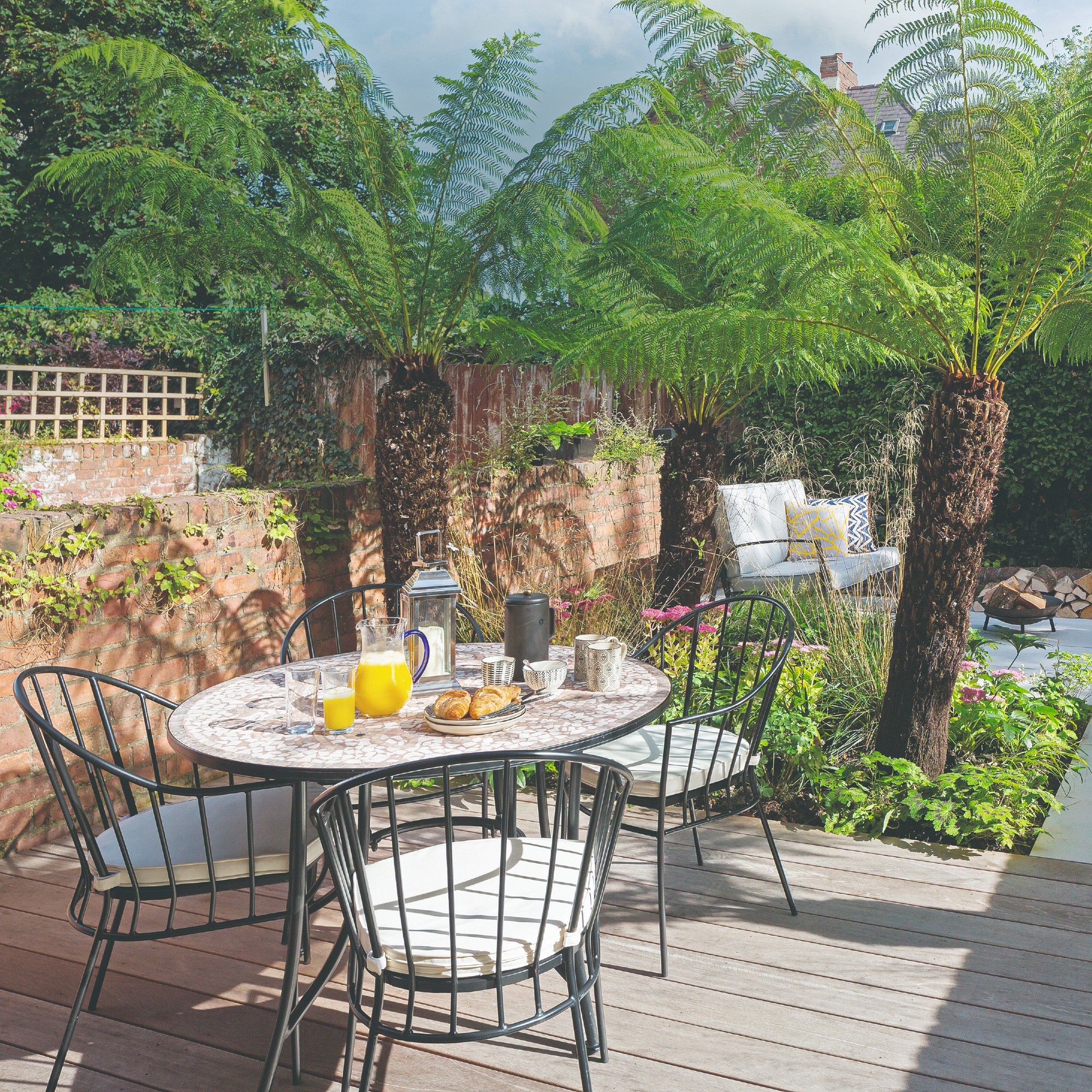
What you’ll need
- Metal scourer - like these Zale Yardley Scouring Pads from Amazon.
- Cleaning cloths - like these Sorbo Pack of 4 Microfibre Cloths from Dunelm.
- Soft-bristled brush - like this OXO Good Grips Deep Clean Brush Set from John Lewis.
- Bucket - like this Small Blue Cleaning Bucket from Lakeland.
- White vinegar - like this Miniml White Vinegar from Lakeland.
- Garden hose - like this Hozelock Compact Reel with Accessories from Argos.
- Outdoor furniture cover - like this Garden Large Corner Sofa & Lounge Set Furniture Cover from John Lewis
Step-by-step
1. Brush off any debris
If you want to clean metal garden furniture, your first step is to brush off any easy-to-remove debris. For this, you’ll need a soft-bristled brush - ideally a small one rather than a broom.
‘For general furniture maintenance, remove any cushions and brush away loose debris such as leaves, bird droppings or food,' says Caron Grant, brand manager at Bridgman.
And while you may be inclined to whip out one of the best pressure washers for the next step, it’s in your best interest to hold fire. After all, metal garden furniture is one of the five types of garden furniture you should never clean with a pressure washer. Instead, you need to clean by hand.
2. Clean with warm, soapy water
With the larger loose debris removed, you can then work on getting into the nooks and crannies of your metal garden furniture. These small spaces are often filled with dried-on stains, leftover crumbs, and even cobwebs if you haven’t mastered how to keep spiders off garden furniture.
Get the Ideal Home Newsletter
Sign up to our newsletter for style and decor inspiration, house makeovers, project advice and more.
For this task, you can use a bucket of warm, soapy water (washing-up liquid will do) and either the same soft brush as before or a clean microfibre cloth. Ultimately, this is determined by the type of your metal furniture.
'For aluminium furniture or rope furniture with a metal frame, clean using a cloth and warm, soapy water, then dry with a soft, non-scratch cloth,' advises Caron.
If you have any other type of metal furniture, you can use the soft-bristled brush. Avoid using a hard-bristled brush, though, as this may scratch the metal.
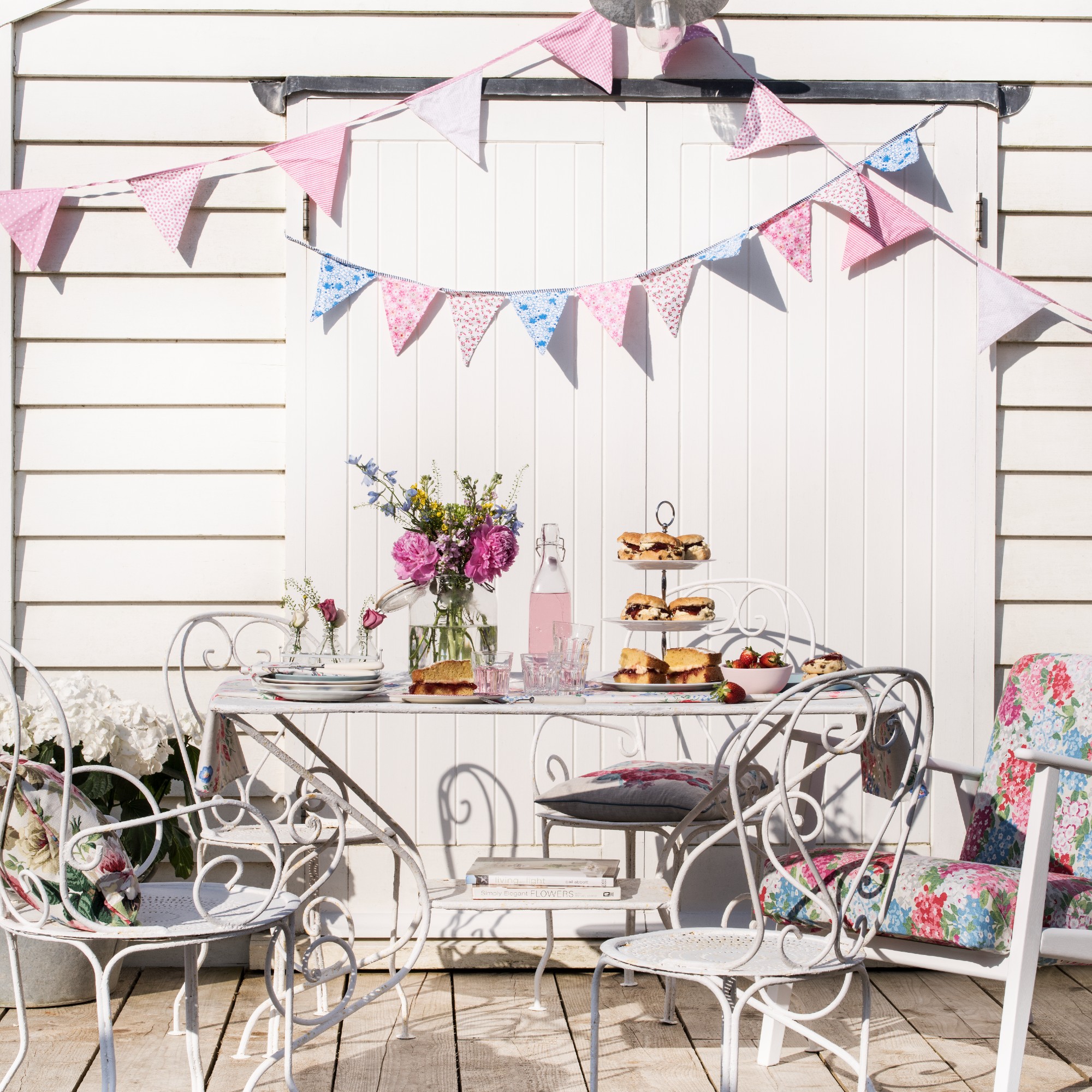
3. Then, tackle any rust
If you’ve completed the steps above and noticed rusty patches on your metal garden furniture, you need to work on cleaning rust off the metal. And don’t worry; this is very common.
‘Metal furniture is very durable but it does get rusty. Rust results from oxidation which then starts to break down and peel off,' explains Martin Beaumont from Monty Miracle.
Thankfully, it’s fairly easy to tackle the rust on your metal garden furniture. ‘Purchase a brittle wire brush and gently scrape away any lumpy rusty patches using circular motions, making sure to wipe clean afterwards,' suggests Martin. 'Once the surface is dry, a small piece of sandpaper can even out the surfaces if needed.’
Alternatively, you could use white vinegar to clean the rust off your metal garden furniture. The acidity of the vinegar breaks down the rust and you should then be able to simply wipe it off. Ideally, you’ll want to soak a cloth in vinegar and lay it on top of the rust for an hour or so, though.
4. Rinse with fresh water
When you’ve cleaned your metal garden furniture and removed any rust, it’s then imperative that you rinse the whole thing down. Leaving any residue from cleaning products on the metal can not only affect the integrity of the furniture but also result in further rusting and discolouration.
‘Don’t use a power wash as this can damage the vulnerable parts of the metal further,' warns Martin. Instead, the best way to do this is to either grab a bucket of cold water or use your garden hose to hose the whole thing down.
Ideally, you should then let it air dry. But if it’s not a sunny day, you could use a clean cloth or chamois to dry it as quickly as possible.
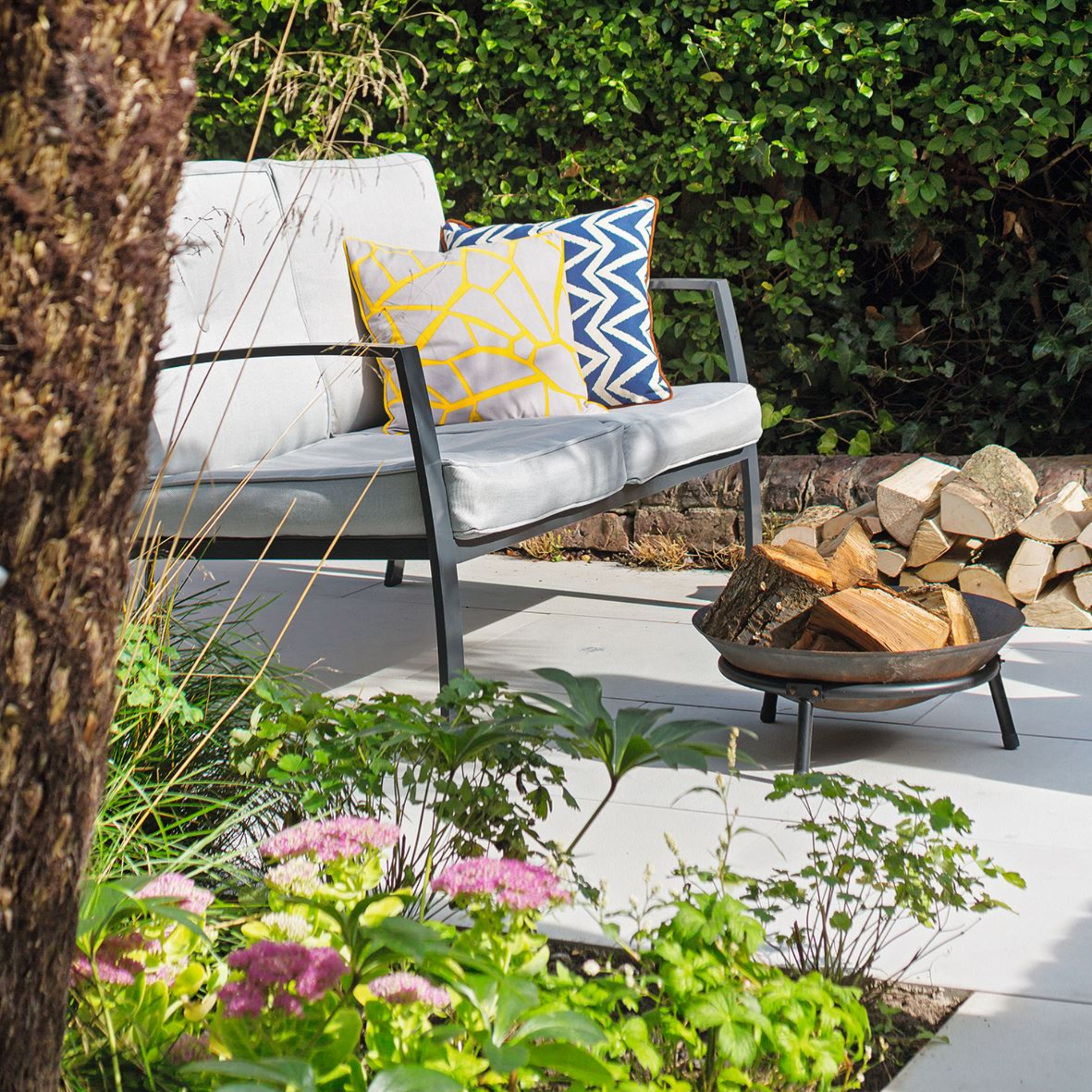
5. Consider painting or sealing it
While knowing how to clean metal garden furniture is a skill everyone should know, we’re going to bet your bottom dollar that you don’t want to do it regularly. If this is the case, you might consider painting or sealing it for added protection.
Reilly Gray, Co-Founder of Suns Lifestyle says, ‘Once dry, apply the relevant care and protection products to ensure your furniture is maintained properly.’
You have a few options for this, too. You could opt for a sealant like this Rust-Oleum Spray Crystal Clear Matt Protective Coat from Amazon, or you could use a specialised protective paint like this Polar Direct to Rust Satin Black Metal Spray Paint from Amazon.
‘Once it is dry, paint works as a great barrier for metal furniture - and looks great,' adds Martin. 'White is particularly popular along with green and black but we are seeing a lot of bright colours and pastels on old tradition metal furniture which looks great too.’
So, choose the best option for you and your garden idea.
6. Protect with a furniture cover
If you want to add another layer of protection after cleaning your metal garden furniture, it’s worth questioning whether you should invest in an outdoor furniture cover, too.
And while some metal garden furniture can live outside year-round without this protection, it’s better to be safe than sorry, according to Reilly. He explains, ‘If the furniture is made of wrought iron, then it’s especially important to store in a dry and sheltered location as this is more susceptible to rust than other metals.’
‘Furniture made from weather-resistant aluminium is more resistant to rust and corrosion, but storing in a dry location will only help to enhance its lifespan,’ adds Reilly.
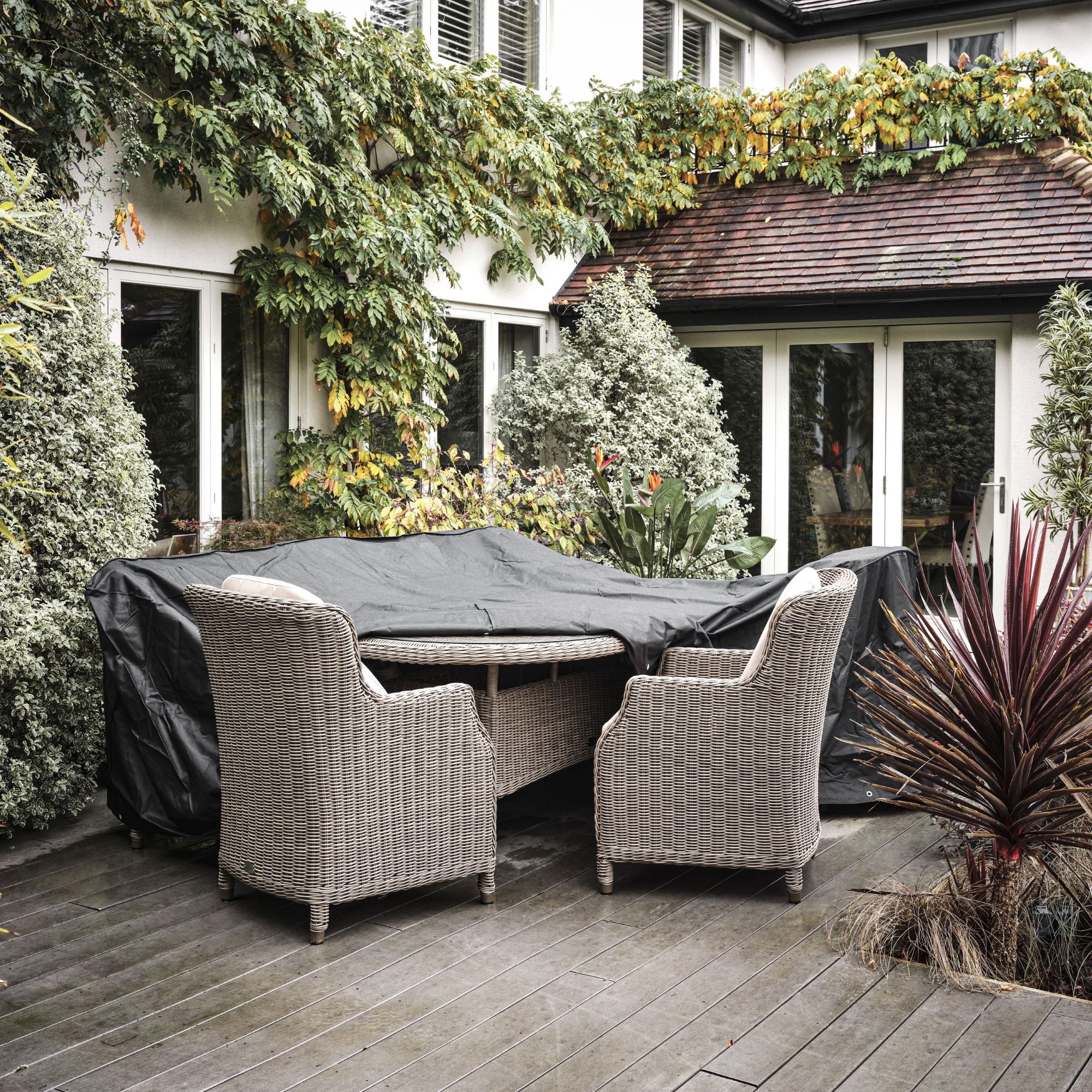
FAQs
How do you remove green tinge from metal?
Although it’s not as common as rust, metal garden furniture can suffer from algae build-up. This can result in a green tinge and visible biological growth - often within the nooks and crannies of your metal garden furniture.
You can remove this green tinge from metal by using white vinegar, which is a natural disinfectant. You can either soak a cloth in white vinegar and wipe the algae directly, or you can spray a mixture of white vinegar and water with a spray bottle onto the affected areas before wiping it off.
Then finish by rinsing it with fresh water before allowing it to dry. If the green tinge is still there after the first clean, you may need to repeat the process.
How do you make metal furniture shine?
If you’ve cleaned your metal garden furniture and removed any rust, you may find that it’s much shinier than it was before you started.
But if that wasn’t the case and you want to restore the shine it had when you first bought it, you can use a metal polish for this. Just make sure that the polish you buy is compatible with the type of metal you have.
Some people also find that using lemon juice can make metal furniture shine. If you cut a lemon in half, top it with a bit of salt, and then wipe it along your metal, it should add a dazzling sheen to your metal garden furniture.
Well, there you have it. That’s how to clean metal garden furniture. Happy cleaning!

Lauren Bradbury has been the Content Editor for the House Manual section since January 2025 but worked with the team as a freelancer for a year and a half before that. She graduated with a Bachelor’s degree in English and Creative Writing from the University of Chichester in 2016. Then, she dipped her toe into the world of content writing, primarily focusing on home content. After years of agency work, she decided to take the plunge and become a full-time freelancer for online publications, including Real Homes and Ideal Home, before taking on this permanent role. Now, she spends her days searching for the best decluttering and cleaning hacks and creating handy how-to guides for homeowners and renters alike, as well as testing vacuums as part of her role as the Ideal Home Certified Expert in Training on Vacuums, having spent over 110 hours testing different vacuum models to date!
-
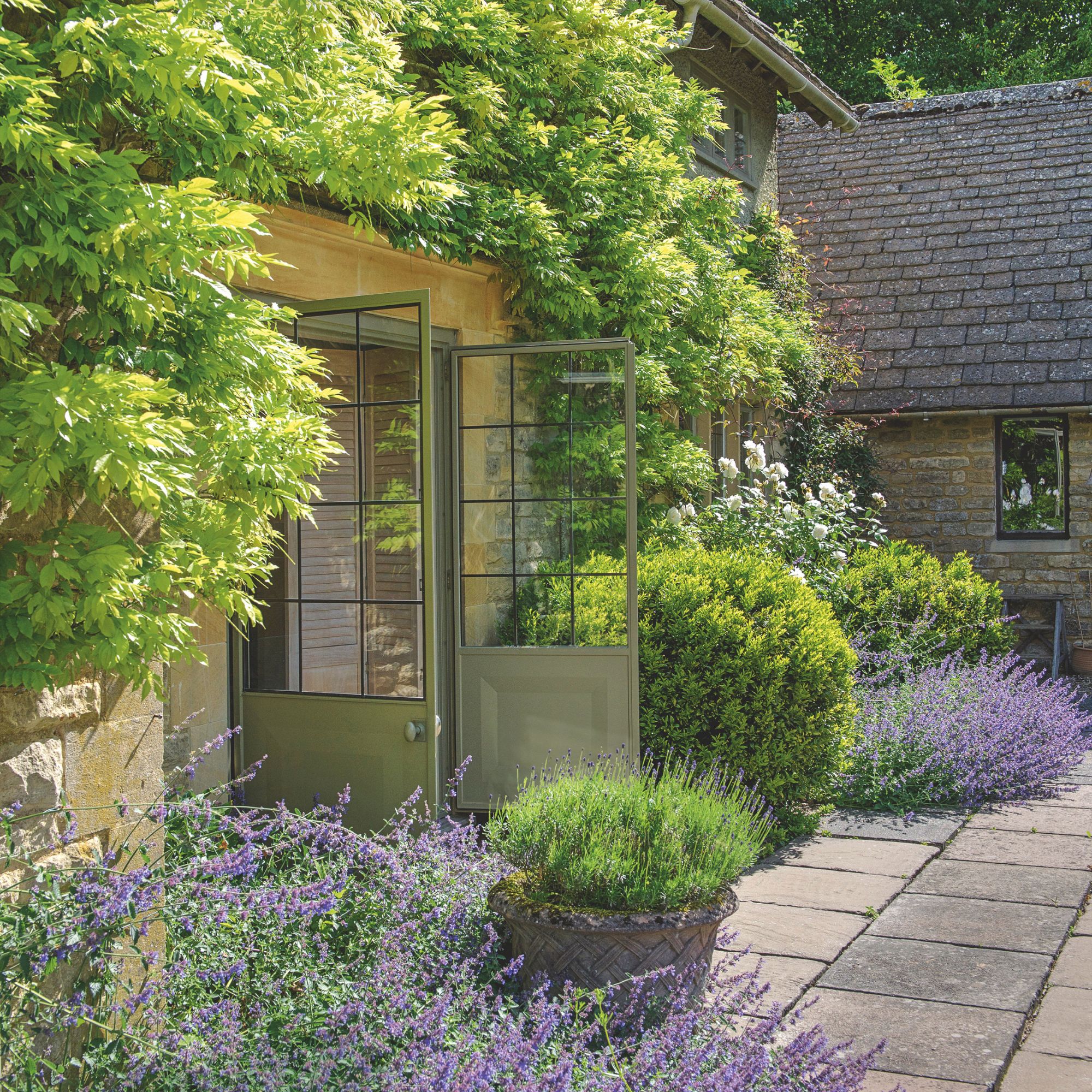 5 fragrant shrubs that will fill your garden with a gorgeous scent this summer
5 fragrant shrubs that will fill your garden with a gorgeous scent this summerAdd an extra dimension to your outdoor space with these scented shrubs
By Kezia Reynolds
-
 Should your front door colour match your hallway? Interior experts reveal 3 reasons why it should (and 3 reasons it shouldn't)
Should your front door colour match your hallway? Interior experts reveal 3 reasons why it should (and 3 reasons it shouldn't)Are you team matching or contrasting?
By Ellis Cochrane
-
 This £200 limited-time discount makes this Dyson vacuum cheaper than I’ve ever seen it - run don’t walk to Argos for this bargain
This £200 limited-time discount makes this Dyson vacuum cheaper than I’ve ever seen it - run don’t walk to Argos for this bargainIt's the most affordable Dyson on the market right now
By Lauren Bradbury